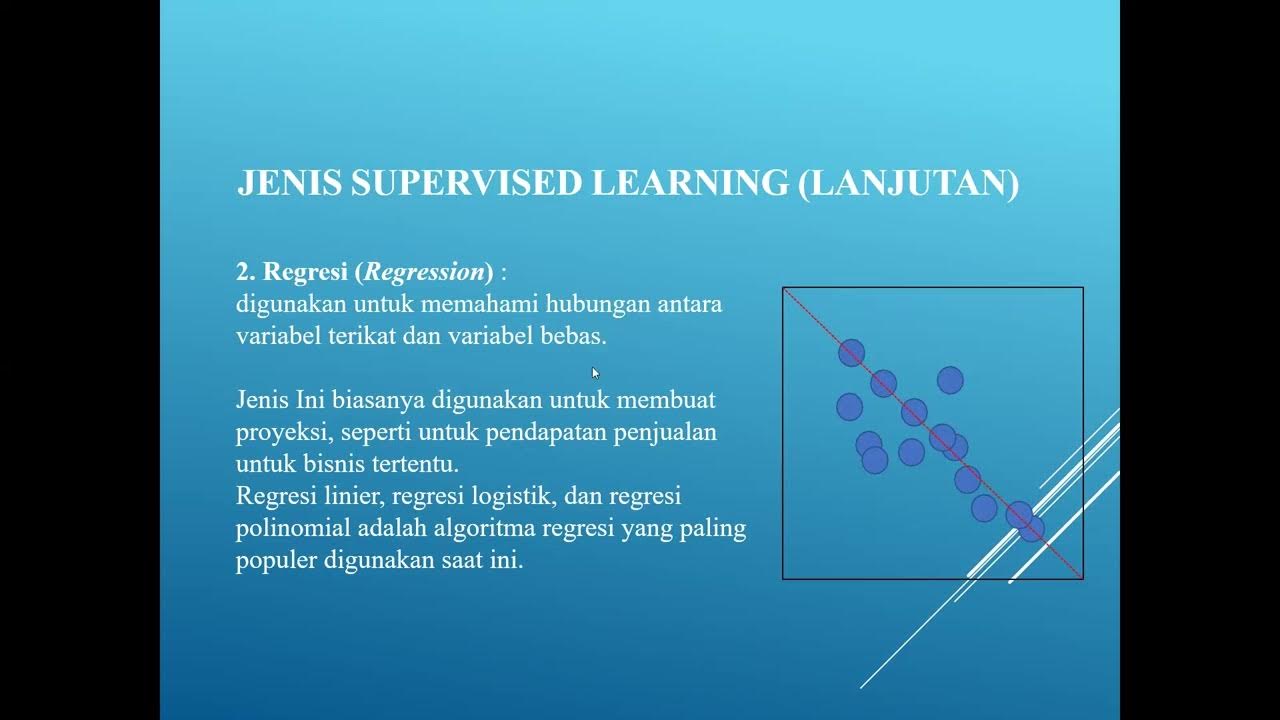ML.NP1.1 Diabetes Prediction Part - 1
Summary
TLDRThis project focuses on using machine learning algorithms to predict diabetes based on health records. The primary objective is to classify individuals as diabetic or not, using data such as glucose levels, BMI, and other health parameters. The project involves steps like data preprocessing, exploratory data analysis, feature engineering, and the implementation of machine learning models like KNN, SVM, and logistic regression. Through this process, the goal is to create an accurate prediction model, evaluate its performance, and ultimately help in the early diagnosis of diabetes.
Takeaways
- 😀 The project aims to predict diabetes using health records, focusing on type 1 and type 2 diabetes classification.
- 😀 Diabetes occurs when blood glucose levels are high due to insufficient insulin production or utilization.
- 😀 Type 1 diabetes results from the immune system attacking insulin-producing cells in the pancreas.
- 😀 Type 2 diabetes is caused when the body either doesn't produce enough insulin or doesn't use it effectively.
- 😀 High blood glucose over time can cause severe health issues such as heart diseases, stroke, kidney damage, and nerve damage.
- 😀 The machine learning model will use a dataset of health records to predict diabetes risk.
- 😀 Key steps include data import, handling missing values, exploratory data analysis (EDA), and feature engineering.
- 😀 The project will implement various machine learning algorithms, including Support Vector Machines (SVM), K-Nearest Neighbors (KNN), and Multi-Layer Perceptron (MLP) classifiers.
- 😀 Data preprocessing tasks include handling missing values and visualizing relationships through tools like heatmaps.
- 😀 The final objective is to evaluate the performance of the models by checking their accuracy on a test dataset.
Q & A
What is the primary objective of the project discussed in the transcript?
-The primary objective of the project is to develop a machine learning model that can predict diabetes based on health records, using various machine learning algorithms.
Which machine learning algorithms are mentioned in the transcript for predicting diabetes?
-The machine learning algorithms mentioned include Support Vector Machines (SVM), K-Nearest Neighbors (KNN), and Logistic Regression.
What types of diabetes are primarily discussed in the transcript?
-The transcript primarily discusses Type 1 and Type 2 diabetes.
How does Type 1 diabetes differ from Type 2 diabetes?
-Type 1 diabetes occurs when the body does not produce insulin, often due to immune system attacks on the pancreas. Type 2 diabetes occurs when the body cannot effectively use insulin, often due to lifestyle factors and develops more gradually.
Why is predicting diabetes important according to the transcript?
-Predicting diabetes is important because uncontrolled diabetes can lead to serious health complications such as heart disease, stroke, kidney damage, and nerve damage.
What kind of data is used in this project to predict diabetes?
-The data used consists of health records, which include various health parameters such as age, blood pressure, glucose levels, and other medical factors.
What is the purpose of exploratory data analysis (EDA) in this project?
-Exploratory Data Analysis (EDA) is used to understand the dataset, identify relationships between features, and check for any outliers or anomalies that might affect the accuracy of the model.
What is feature engineering, and why is it important in the diabetes prediction model?
-Feature engineering involves preparing and processing the data to ensure it's suitable for machine learning models. This can include tasks like feature scaling and selection to improve the model's performance.
What is the significance of using machine learning models like KNN and SVM in predicting diabetes?
-Machine learning models like KNN and SVM are significant because they can classify data based on various health parameters and help determine whether a person is at risk of developing diabetes.
What steps are involved in the overall procedure of building the diabetes prediction model?
-The procedure involves importing the dataset, preprocessing data (handling missing values), performing exploratory data analysis, feature engineering, implementing machine learning models, evaluating the models, and finally making predictions based on the trained model.
Outlines

Esta sección está disponible solo para usuarios con suscripción. Por favor, mejora tu plan para acceder a esta parte.
Mejorar ahoraMindmap

Esta sección está disponible solo para usuarios con suscripción. Por favor, mejora tu plan para acceder a esta parte.
Mejorar ahoraKeywords

Esta sección está disponible solo para usuarios con suscripción. Por favor, mejora tu plan para acceder a esta parte.
Mejorar ahoraHighlights

Esta sección está disponible solo para usuarios con suscripción. Por favor, mejora tu plan para acceder a esta parte.
Mejorar ahoraTranscripts

Esta sección está disponible solo para usuarios con suscripción. Por favor, mejora tu plan para acceder a esta parte.
Mejorar ahoraVer Más Videos Relacionados

End to End Heart Disease Prediction with Flask App using Machine Learning by Mahesh Huddar

Tutorial: Data Mining using Rapid Miner (Basics)

MACHINE LEARNING BASED PREDICTION OF CHRONIC KIDNEY DISEASE AND PERSONALISED DIETARY RECOMMENDATIONS

Quantifying the Impact of Data Drift on Machine Learning Model Performance | Webinar

Decoding Life - Machine Learning in Bioinformatics (4 Minutes)

Pengantar Data sains Pert. 4
5.0 / 5 (0 votes)
